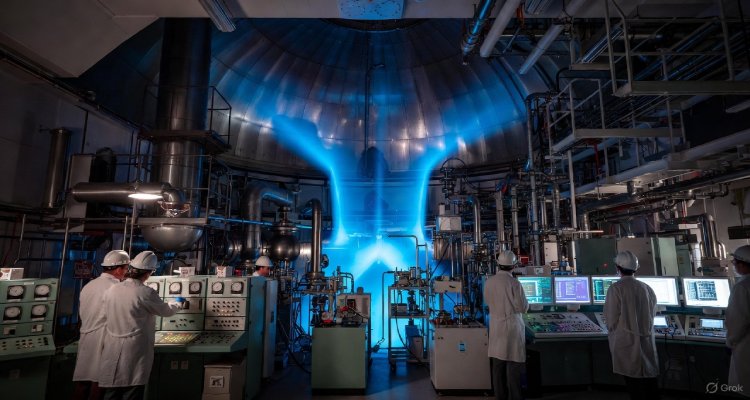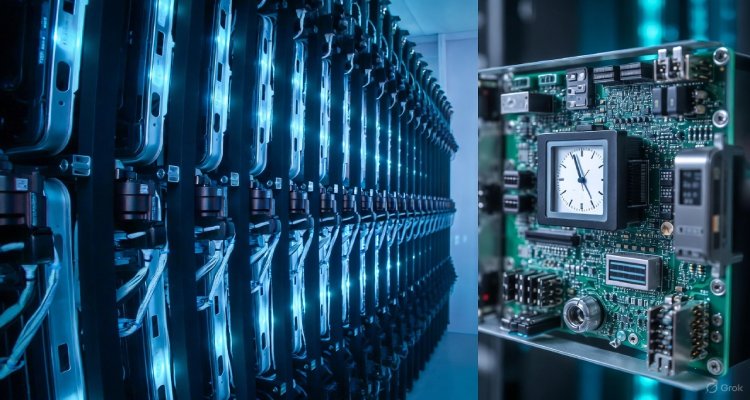Beyond Chatbots: The Hidden AI Systems Running Your Daily Life
AI isn’t just powering chatbots. From traffic lights to banking security, hidden AI systems quietly shape your daily routine in ways you may not even notice.
Introduction: More Than Just ChatGPT
When most people hear “artificial intelligence,” they think of chatbots answering customer queries or generative tools crafting text and images. But AI isn’t just something you actively interact with. In fact, some of the most sophisticated AI systems are invisible—embedded into the background of everyday life, shaping the way we travel, shop, work, and even stay safe. These hidden algorithms rarely make headlines, yet they represent the very infrastructure that keeps modern societies functional.
Context & Background: The Silent Revolution of Everyday AI
AI as a field has been evolving for decades, from early expert systems in the 1970s to today’s powerful neural networks. While chatbots have become the public face of AI in recent years, automation and machine learning technologies were already quietly changing industries long before. Predictive text in your email, recommendation engines on Netflix, and fraud detection systems at your bank illustrate how AI has slipped into daily circulation without fanfare.
This silent integration is sometimes referred to as “ambient AI”—technology that operates in the background, improving systems without demanding direct user attention. Unlike voice assistants or interactive models, ambient AI doesn’t need to be flashy. Its role is to optimize efficiency in ways that feel almost invisible.
Main Developments: Where Hidden AI Is Already Working
Transportation & Traffic Control
That green light you catch on your way to work may not be luck—it may be AI optimizing traffic flow. Cities like Los Angeles and Singapore deploy AI-driven systems that adjust traffic signals in real-time based on congestion patterns, lowering commute times while reducing emissions. On a larger scale, navigation platforms such as Google Maps rely on AI to reroute drivers based on live traffic and accident data.
Banking & Fraud Detection
Every time you swipe your debit card, an AI system evaluates whether the transaction looks suspicious. Banks deploy machine learning models trained on millions of transactions to flag anomalies instantly. These models can spot a fraudulent purchase miles away while letting legitimate payments through without delay—saving billions for institutions and protecting consumers without them ever noticing.
Healthcare Diagnostics
While doctors remain at the center of patient care, diagnostic AI is already running behind the scenes. Radiology departments use AI to scan images for early signs of diseases like cancer, while hospitals employ AI-driven scheduling to manage staff and allocate resources more efficiently. These systems don’t replace human expertise but instead strengthen precision and efficiency.
Retail & Recommendation Engines
That oddly perfect product Amazon suggests? It’s not a coincidence. Recommendation systems are powered by AI models that track what millions of other users purchase, pair it with your browsing history, and predict what you want next. In physical stores, AI manages supply chains, reducing waste while ensuring products stay stocked.
Cybersecurity & Spam Filters
From your inbox to your company’s servers, AI is the digital gatekeeper. Spam filters in Gmail or Outlook block billions of suspicious emails daily using AI algorithms trained on patterns of phishing attacks. Meanwhile, companies deploy AI-driven firewalls to identify unusual network traffic before a human analyst could even scan the logs.
Expert Insight & Public Reaction
“People often think of AI only when they see a chatbot or a robot,” notes Dr. Aditi Sharma, an AI ethics researcher at the Indian Institute of Technology. “But in reality, these background systems are the foundation of how modern infrastructure operates. The challenge is that because they’re invisible, people don’t always recognize their impact—or question their risks.”
Public reaction is often mixed. On one hand, convenience is undeniable: faster traffic lights, safer banking, personalized shopping. On the other hand, the opacity of these “invisible” systems raises concerns. Who monitors the algorithms shaping our choices? And how do we ensure accountability when an unseen AI makes a mistake?
Impact & Implications: The Future of Hidden AI
As AI evolves, its reach will only expand. Cities will integrate AI further into urban planning, analyzing citizen data for smarter energy use and waste management. Financial systems will adopt more predictive models designed to stop market manipulation before it occurs. Healthcare will continue blending diagnostics with patient data to predict illness risks before symptoms arise.
But with greater influence comes greater responsibility. Regulators worldwide are beginning to scrutinize how hidden AI systems operate. The European Union’s AI Act and the U.S. AI Bill of Rights blueprint are early attempts to impose transparency, fairness, and accountability.
For everyday users, the implication is clear: even if you don’t type questions into ChatGPT or use a voice assistant, AI is already shaping your experiences every minute of the day.
Conclusion: The Hidden Infrastructure of Tomorrow
Chatbots may be the headline-makers of AI, but the truest revolution is taking place out of sight. From our streets to our wallets, from hospitals to inboxes, hidden AI systems are the quiet operators of modern life. Recognizing their presence is the first step toward understanding not just the benefits they bring—but also the ethical questions they raise.
As AI continues to melt into the background of everyday routines, the discussion must move beyond what these systems can do toward how they should be designed, governed, and made accountable. Because in a future run by invisible algorithms, transparency may be the most important innovation of all.
Disclaimer : This article is for informational and educational purposes only. It does not provide financial, legal, or medical advice. Readers should consult relevant professionals for guidance on specific issues.











